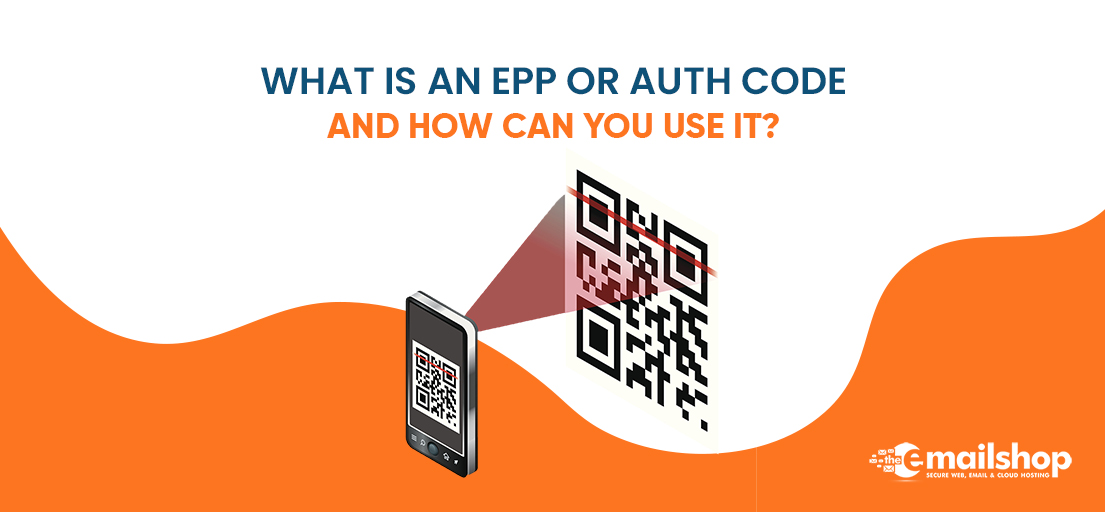Domain names are precious digital assets in the huge world of the internet, sometimes serving as symbols for companies, organizations, or individual identities. Nevertheless, in an era where online risks are commonplace, it is imperative to guarantee the security and integrity of these domains. In this instance, the Authentication (Auth) code and the Extensible Provisioning Protocol (EPP) become essential instruments in the domain transfer procedure.
The EPP/Auth code functions as a digital lock or security precaution, blocking unauthorized transfers and attempts to hijack domain names. The EPP/Auth code adds an extra degree of security by guaranteeing that only authorized users can start domain transfers, much like a bank account’s PIN code. In this article, we examine the meaning, use, and importance of the EPP/Auth code in the context of domain management, delving into its complexities.
What is An Auth/EPP Code?
A domain authorization code, sometimes called an EPP code or an Auth code, adds a layer of protection to the domain name registration process. Each domain name has a unique code that is given to it by the registrar at the time of registration. To move a domain from one registrar to another, you’ll want an Auth Code. For example,.com,.net,.org,.us,.biz,.info,.me,.co,.io,.ca,.tv,.in,.mobi,.cc,.pe,.com.pe,.net.pe,.org.pe,.tech,.top,.party,.loan,.faith, and other new gTLD/country code TLD domain transfers require Auth/EPP codes.
The Importance of Domain Name Management
Protecting the integrity and security of domain ownership is one of the key duties of the Auth (Authorization) and EPP (Extensible Provisioning Protocol) Codes in domain name management. These codes provide an essential initial line of defense against attempts at domain hijacking and unauthorized transfers. The technique makes sure that domain transfers between registrars may only be initiated by authorized individuals who possess the special code by demanding an EPP/Auth Code. This process of verification verifies that the asking party is the rightful owner of the domain and that the transfer request is legitimate. By requiring EPP/Auth Codes to comply with regulatory standards established by entities such as ICANN (Internet Corporation for Assigned Names and Numbers), the domain management ecosystem promotes accountability and compliance.
Using An EPP/Auth Code
A set of procedures must be followed to authorize and support a domain name transfer between registrars when using an EPP/Auth Code. This is a thorough description of how it operates:
Initiating the Transfer
If you decide to transfer your domain name to a new registrar, you must first obtain the EPP/Auth Code from your current one. This code serves as the transfer process’s special authorization key.
Requesting the EPP/Auth Code
Open the website or portal of your current registrar and login to your account. Go to the domain management area and look for the option to request the EPP/Auth Code for the domain you wish to transfer. This process can vary greatly according to the registrar, but in general, there’s a button or link that says “Request Authorization Code” or “Get EPP Code.
Verification
To make sure the transfer request is legitimate, certain registrars might need more proof. This can entail proving your identity over the phone, via email, or in another way.
Receiving the Code
The registrar will produce the EPP/Auth Code for your domain if the request is authorized. Usually, an email with the code is sent to the address linked to your account. As an alternative, the code might be directly viewable and copyable through the registrar’s interface.
Transferring the Domain
Once you have the EPP/Auth Code, you may begin the transfer process with your new registrar. During the transfer procedure, you will be prompted to enter the EPP/Auth Code to approve the transfer. This procedure guarantees that the transfer can only be started by the domain owner who has access to the code.
Verification by the New Registrar
The new registrar will confirm the authenticity of the EPP/Auth Code after receiving the transfer request. To protect the domain’s security and stop illegal transfers, this verification is crucial.
Completion of Transfer
The successful confirmation of the EPP/Auth Code will initiate the transfer process, which will result in the domain being transferred from the previous registrar to the new one. While the transfer is being finished, there may be a brief domain outage that lasts a few days.
Confirmation
When the transfer is finished, you will receive an email notification from both the old and new registrars. Notifications verifying the domain’s release from the previous registrar and its smooth transfer to the new registrar may also be sent to you by the relevant registrars.
Read More: How to Send Anonymous Emails Without a Trace – Tips & Tricks
Security Considerations
When managing EPP/Auth Codes in domain management, security is crucial. To guarantee the confidentiality and integrity of these codes, keep in mind these important points.
-
Confidentiality
The EPP/Auth Code should be handled with caution and should not be disclosed to anyone who isn’t allowed to administer your domain. Avoid keeping the code in plain sight in places like email inboxes or unprotected documents; instead, keep it safe.
-
Secure Transmission
Make sure that the communication routes are secure when sending or receiving the EPP/Auth Code. When visiting the website or portal of your registrar, make use of encrypted connections (such as HTTPS) and confirm the sender’s identity if you receive the code by email or another method.
-
Authentication
Make sure the request is legitimate before giving out the EPP/Auth Code. Verify the identification of the person or organization submitting the request and make sure they are authorized to administer the domain.
-
Regulatory Compliance
Respect the legal requirements and directives established by agencies such as ICANN (Internet Corporation for Assigned Names and Numbers) concerning the management and exchange of EPP/Auth Codes. Respecting these rules contributes to preserving the domain management process’s credibility and openness.
-
Two-Factor Authentication
Consider implementing two-factor authentication (2FA) if you would like to access your registrar account using it. Increasing security by requiring an additional form of authentication, such as a one-time code texted to your mobile device, in addition to your password.
-
Regular Audits
Assess your domain management procedures regularly and conduct an audit on the use and access of EPP/Auth codes. Recognize any unauthorized or unexpected activity and act quickly to resolve it by taking the necessary action.
-
Regeneration and Rotation
If there is any reason to believe that the EPP/Auth Code’s security could be jeopardized (such as by suspected unauthorized access), you should think about rotating or regenerating the code to invalidate the previous one and create a new one. This lessens the possibility of illegal transfers or efforts at domain hijacking.
Email Shop is the best domain name service provider in the UK. Register a new domain or transfer your existing domain to the email shop.
For Discount and Offers, Visit our Official Twitter Page









